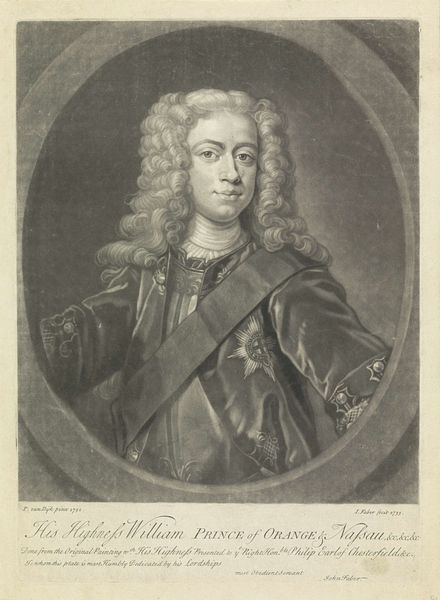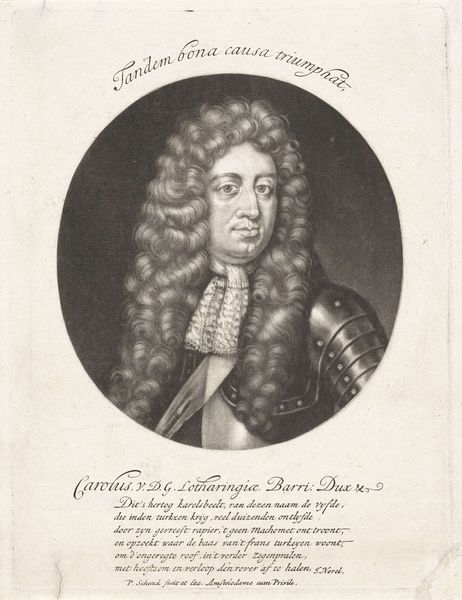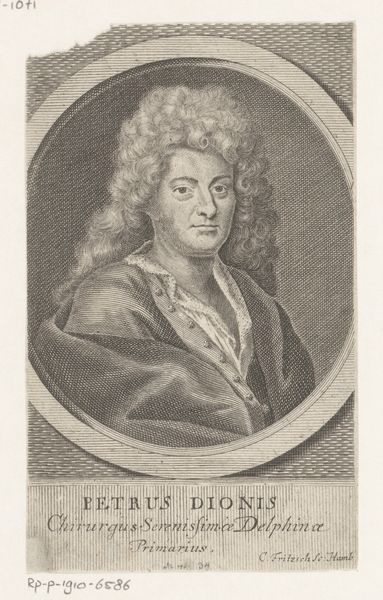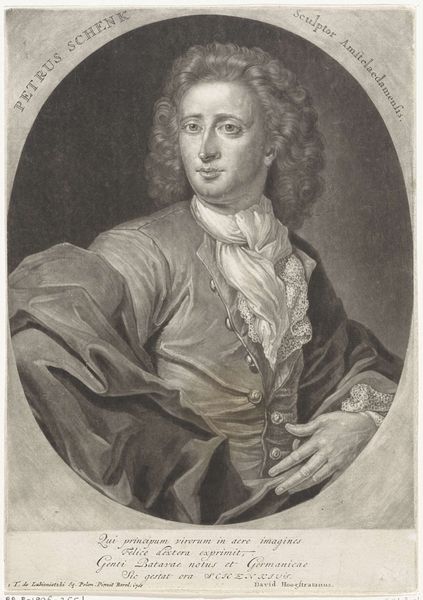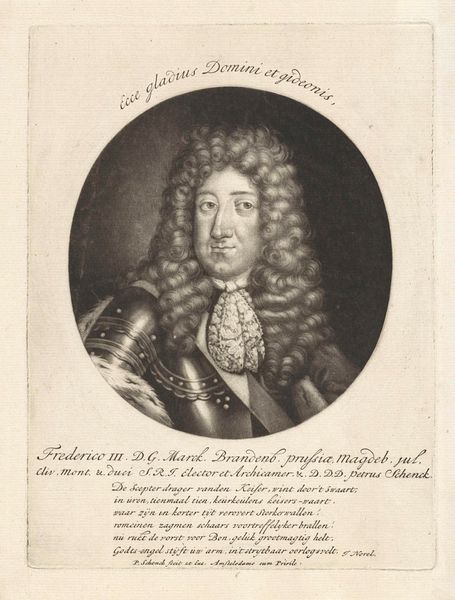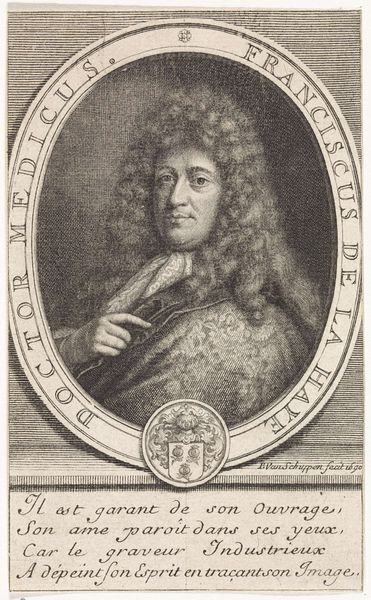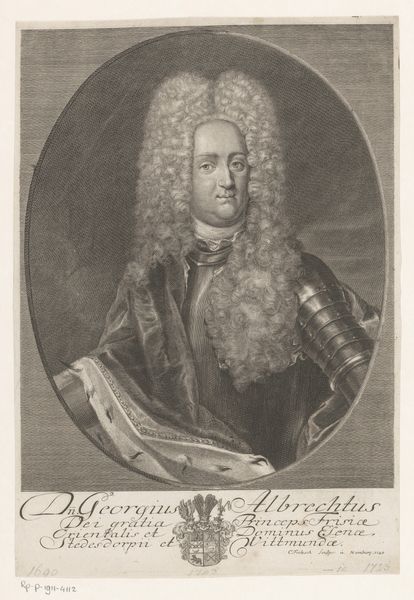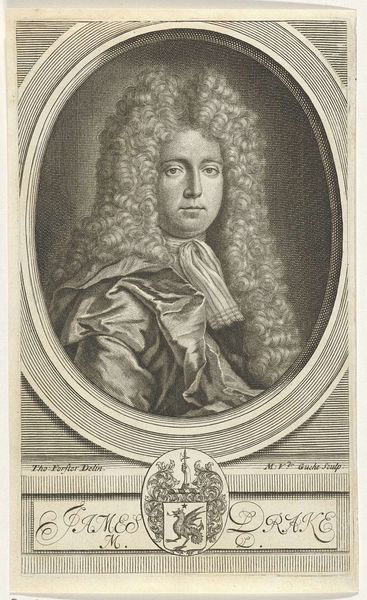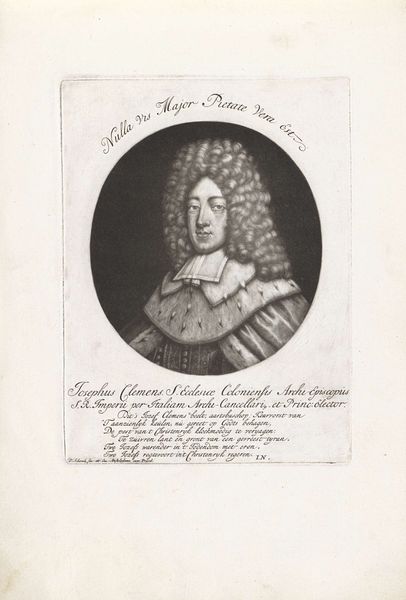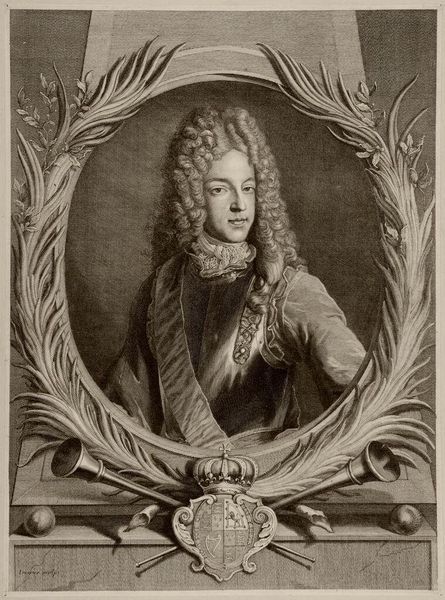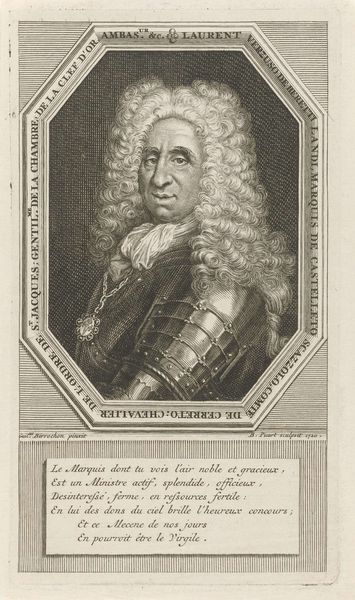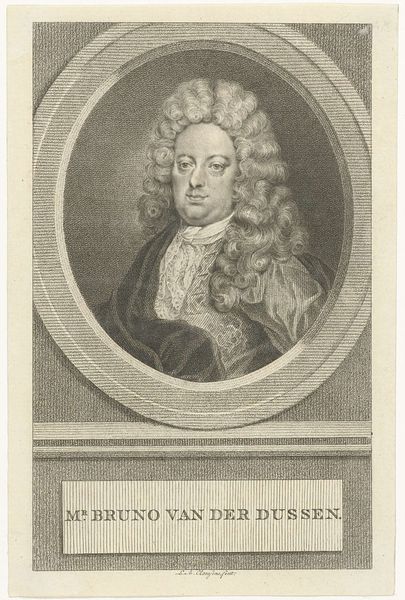
print, engraving
#
portrait
#
baroque
# print
#
old engraving style
#
caricature
#
engraving
Dimensions: height 257 mm, width 174 mm
Copyright: Rijks Museum: Open Domain
Curator: I find myself drawn to the sheer volume of that wig! The swirling lines and elaborate detail definitely catch the eye. Editor: You're right, it is remarkable! This engraving, completed in 1703 by Pieter Schenk, is titled "Portret van Arnold Joost van Keppel." Considering it’s a print, I am struck by the detail achieved with such simple materials. Curator: The rendering of the fabrics also intrigues me – velvet or silk, perhaps? How was texture achieved with a fairly restrictive medium? Were particular workshops known for superior engraving skills, especially in reproducing textiles for wider consumption? Editor: Good questions. The social standing of van Keppel, evidenced by the ornate embellishments in his clothing, speaks volumes about the man and the era, doesn’t it? The Rijksmuseum, where this piece resides, seems like the perfect institutional home, where the social implications and symbolic significance of portraiture in this era can be properly analyzed and shared. Curator: I see what you mean. Beyond just depicting an individual, Schenk's piece broadcasts wealth and privilege through meticulously rendered material markers – that fur collar, the elaborate sash...these aren't just incidental details but potent visual signifiers understood by contemporary viewers. Were there strict codes surrounding who could wear what? Editor: Certainly. Dress and adornment were highly regulated social languages at the time, dictating status and allegiances. Furthermore, prints like this circulated widely, helping to solidify the image of power, creating and maintaining celebrity—to bring someone like Van Keppel into homes across the country. Curator: Interesting! So this portrait performs a function far beyond simple representation; it’s active in shaping a visual culture of authority and class distinction through the mechanics of its production and consumption. The scale, due to it being an engraving, allows access to this persona, beyond just aristocracy and nobility. Editor: Exactly. From my point of view, I consider not just the image itself but also how the act of displaying and distributing images impacts our collective memory and cultural narratives, then and now. The Rijksmuseum serves as one place where all this gets considered and debated by audiences from different backgrounds. Curator: I appreciate that perspective. For me, it boils down to thinking critically about how artists and artisans—people who were craftspeople or working within those shop settings—collaborated on these kinds of highly commercialized luxury goods. Editor: Agreed, this layered view has made me reconsider the implications of portraiture of this era. It feels particularly apt in our current climate.
Comments
No comments
Be the first to comment and join the conversation on the ultimate creative platform.
